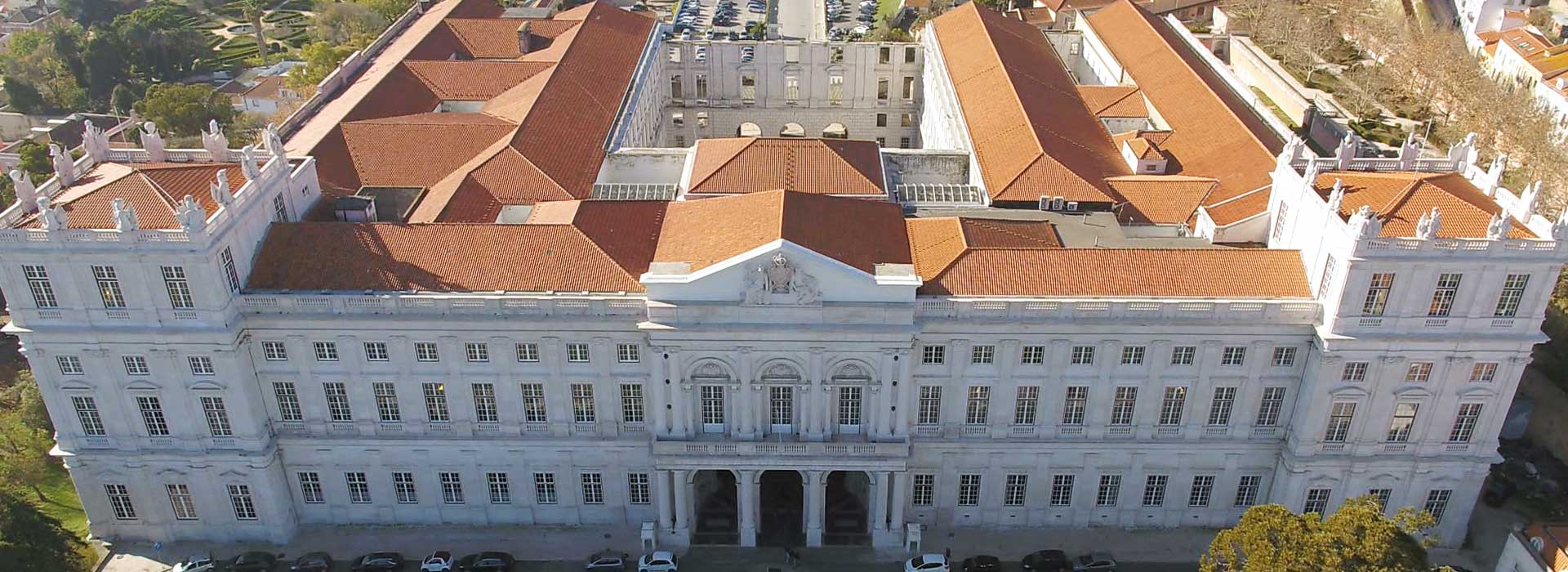
The Ajuda National Palace (Palácio Nacional da Ajuda)
Ensconced on the Ajuda hilltop north of Belém, Ajuda Palace stands as a testament to Portugal's rich royal heritage. This architectural gem, steeped in grandeur and opulence, offers visitors a captivating journey through time. Originally conceived in the aftermath of the devastating 1755 earthquake, the palace boasts stunning Neo-Classical design elements, reflecting the artistic vision of its era.
From its elegant façade to its lavishly adorned interiors, this 19th Century royal summer residence exudes regal charm at every turn. As a former royal residence, it witnessed the ebbs and flows of Portuguese history serving as a backdrop to royal celebrations and political intrigue.
Today, Ajuda Palace welcomes guests to explore its hallowed halls, adorned with exquisite artwork, ornate furnishings, and priceless treasures. With sweeping views of the Tagus River and lush gardens that surround it, the palace offers a glimpse into the lavish lifestyle of Portugal's monarchs.
Discover the allure of Ajuda Palace, where history, culture, and beauty converge in an unforgettable experience.
Adjuda Palace: Skip the line tickets

With this entrance ticket you can gain entry to the Adjuda Palace at your leisure. Book with confidence with FREE CANCELLATION Buy online before you arrive to avoid queues and have the convenience of the e-ticket on your phone…

• The price includes a single entrance to the venue. Tiqets covers the cost of payment processing and provides you with customer service seven days a week.
• It is strictly forbidden to eat and smoke inside the palace
Thursday – Tuesday: 10h00 – 17h00. Wednesday: CLOSED
Adult: €5.00, Consessionary: €2.50, Child 0-12: FREE
Contact Details
Largo da Ajuda 1349-021, Portugal.
38° 42' 27.5"N | 09° 11' 50.9"W | +351 213 637 095
geral@pnajuda.dgpc.pt | Website
History of the Ajuda Palace
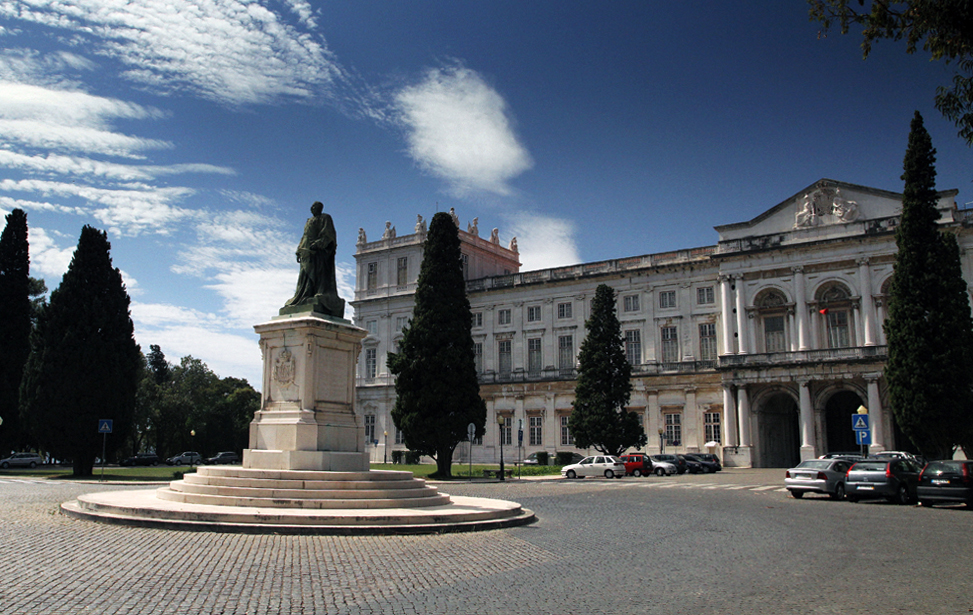
The Ajuda National Palace (Palacio Nacional da Ajuda)
Despite setbacks, including the French invasion of Portugal in 1807, construction persisted. Revamped designs by architects Jose da Costa e Silva and Francisco Xavier Fabri infused the palace with Neo-Classical elegance, overseen by esteemed artisans like Domingos Sequeira and Joaquim Machado de Castro.
In 1861, Ajuda Palace became the hub of Portuguese royal life under King Louis I and Princess Maria Pia. Hosting lavish ceremonies and soirées, it epitomised 19th-century regal splendour.
Transitioning into a museum after the birth of the Portuguese Republic in 1910, Ajuda Palace has since undergone extensive restoration. Today, it not only preserves invaluable collections spanning the 15th to 20th centuries, particularly in decorative arts, but also serves as a dignified venue for official state affairs.
Interior
GROUND FLOOR
The main entrance is a former guardhouse now transformed into an impressive reception room where you can see 23 marble statues. Each statue representing a certain attribute, such as generosity and gratitude. During the reign of King Luís I and Queen Maria Pia, the audience room was transformed into a large waiting room.Music Room
Musical events and private renditions between royal members and trusted courtesans took place in the music room. Luís I was a baritone who also played and composed music for the ‘cello. Maria Pia played the piano. From the Music Room onwards and running alongside the western facade, the Ground Floor was reserved for the private royal chambers.
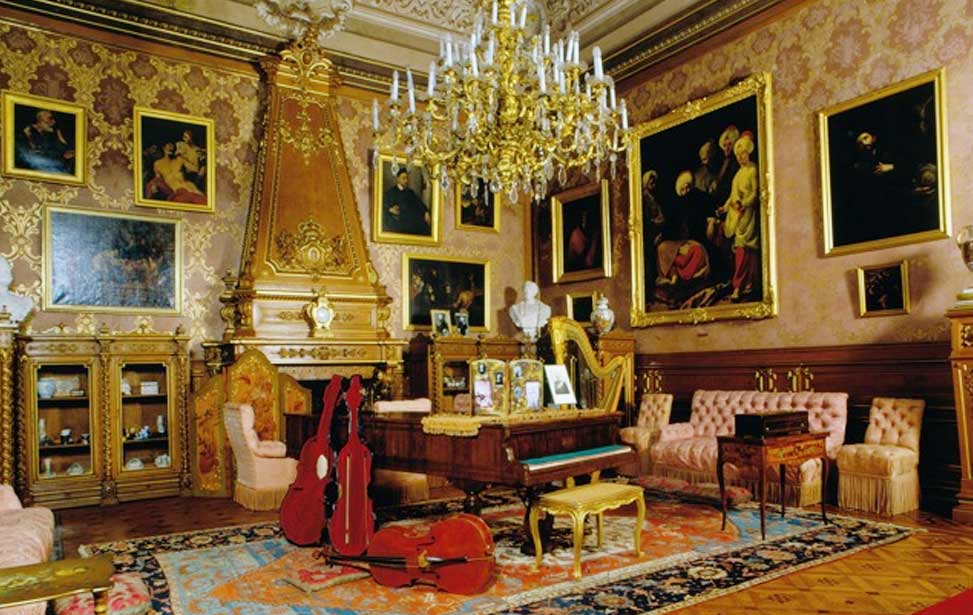
Music Room
TOP LISBON TOURS
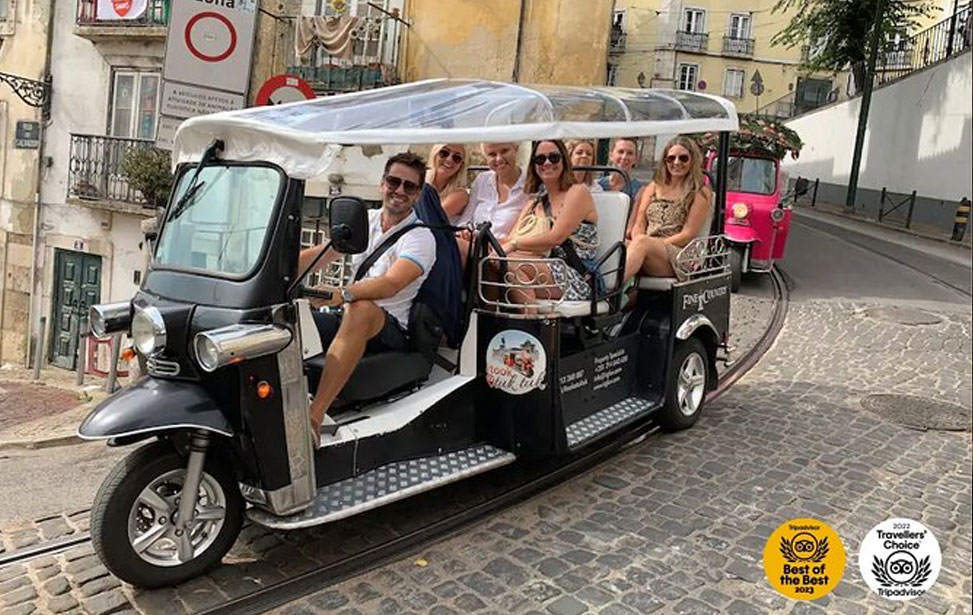
True 4 Hour TukTuk Tour of Lisbon
Experience Lisbon efficiently with a private half-day tuk-tuk tour, perfect for those seeking an eco-friendly way to explore the city. Personalise your itinerary and discover top attractions such as the historic Bairro Alto neighbourhood, the stunning Jerónimos Monastery and the breathtaking Miradouro da Senhora do Monte. Travel beyond the city centre to uncover multiple neighbourhoods while covering more ground quickly. This private tour offers flexibility and an intimate experience, allowing you to soak in Lisbon's vibrant atmosphere and iconic landmarks while enjoying the comfort of your private tuk-tuk.
(4,314) | 4 Hr | ✔ Free Cancellation
Check Availability
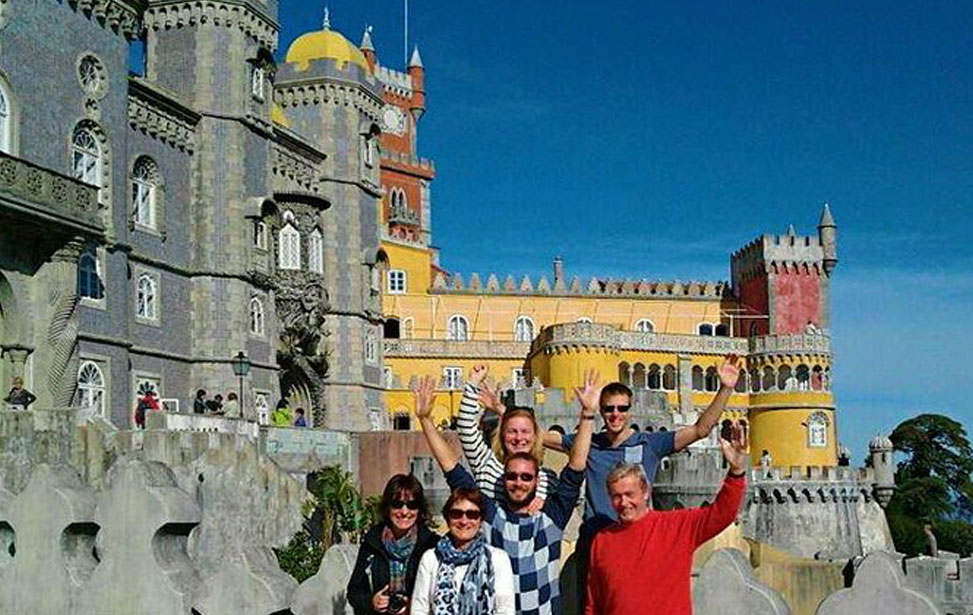
Full-Day Tour Best of Sintra and Cascais from Lisbon
Discover the enchanting beauty of Sintra on a full-day small-group tour from Lisbon. Explore the region's UNESCO-listed sites, including the majestic Pena Palace and charming Sintra Village. Witness stunning views from Cabo da Roca, Europe's westernmost point, and take in the coastal allure of the picturesque fishing village of Cascais. Enjoy personalised attention from your guide throughout this intimate experience, limited to eight people. Round-trip transportation from your Lisbon hotel is included, ensuring a seamless journey. Experience the romantic landscape of Sintra and Cascais on this unforgettable tour.
(753) | 8 Hr | ✔ Free Cancellation
Check Availability
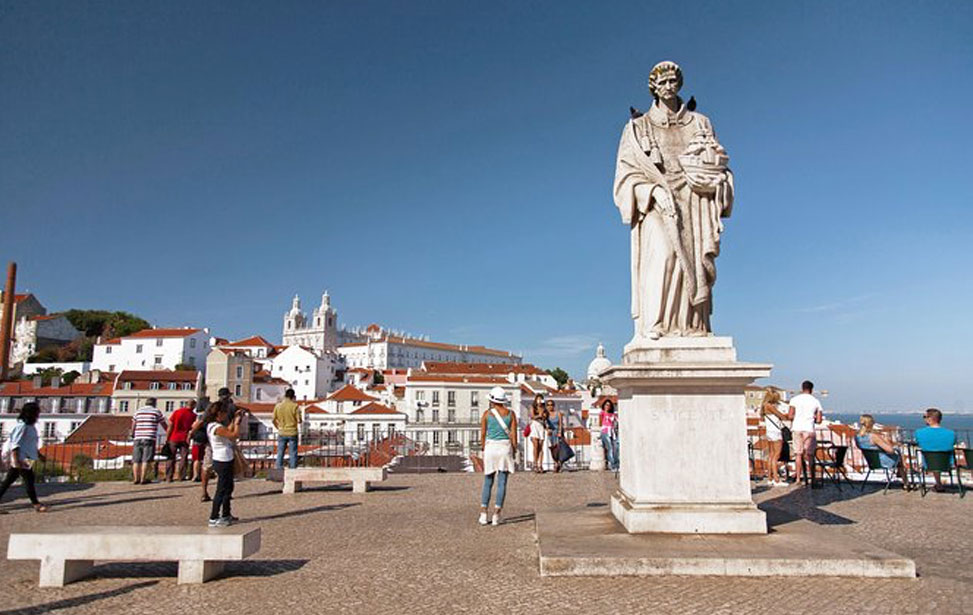
Private City Tour: Highlights of Lisbon
Explore the best of Lisbon on this private tour with an experienced guide. Journey through Portugal's capital, learning about its rich history while visiting top landmarks. Travel efficiently in an air-conditioned vehicle and discover historic districts like Chiado, Alfama, Baixa, and Belem on foot. Choose a morning or afternoon departure and enjoy convenient pickup and drop-off at your Lisbon hotel or cruise terminal. Taste the world-renowned pastel de Belém and immerse yourself in the charm of Lisbon. A private guide and vehicle provide a personalised experience as you uncover the highlights of the city.
(616) | 4 Hr | ✔ Free Cancellation
Check Availability
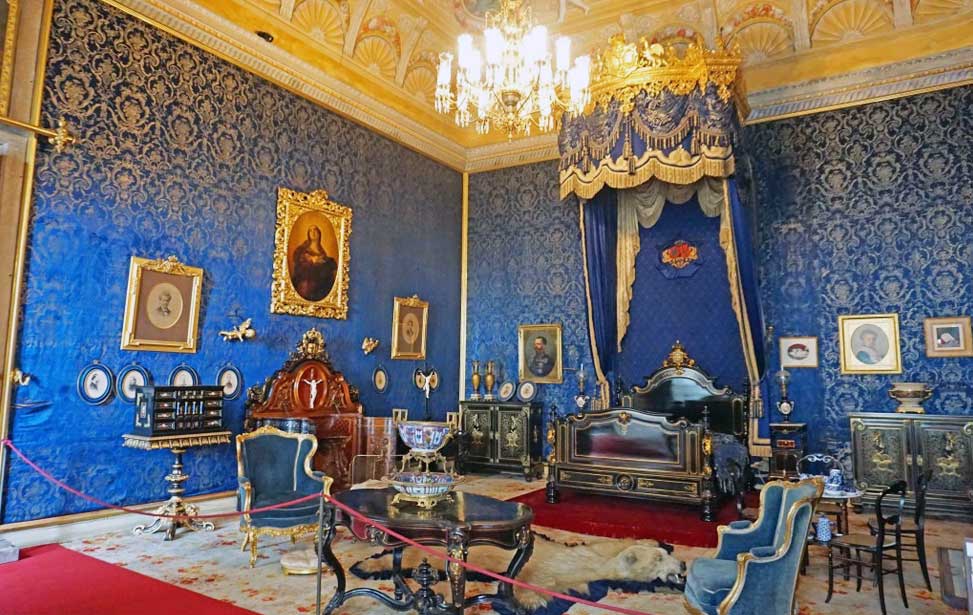
Blue Room
The decorative protocols of fashion in the late 19th century made it essential to have a family living room in the Palace, which had not previously existed. From 1863 to 1865, the Blue Room was completely refurbished, to the Queen’s taste, by the Royal architect, Possidónio Narciso da Silva. The opening of a glass window, with unusual dimensions for the time, meant it was possible to see from one room into another and creating the illusion of a long expanse of space. The strong tone of blue silk was then added, lending the room its name. After dinner, the King would play billiards whilst the ladies adjourned into the blue room.
Marble Room/Winter Garden
Being masters of nature and bringing it inside the house was fashionable in the 19th century and led to the creation of winter gardens. In a highly original manner, this room’s walls and ceiling were lined with alabaster, the gift of the Viceroy of Egypt, used by Possidónio da Silva to carry out the works at the time of the royal marriage in 1862. A place for leisure and relaxation, birthday parties for the princes and royal family, dinners were frequently held here, served on a table set around the Carrara marble fountain.
In 1861, Luís I ordered silks and furniture from Paris to furnish this room. His choices were influenced by Napoleon III style, very fashionable in Europe at the time. The bed sits against the centre of the main wall, raised on a platform and covered by a canopy. The decoration of the walls and hangings is in blue damask silk and silver thread, in varying patterns.
Dinning Room
The original 1802 palace design had no plan for a dining room. The decoration of this room carried out in the 1880s following the tases of the time; Neo-renaissance. All the chestnut ornamentation is by Leandro Braga. He incorporated fragments of 16th and 17th-century carving, characteristic of 19th-century eclecticism. This family room was used daily. At the State Table sat the King, the Queen, Prince Afonso, the dignitaries in service and, at times, an invited guest.
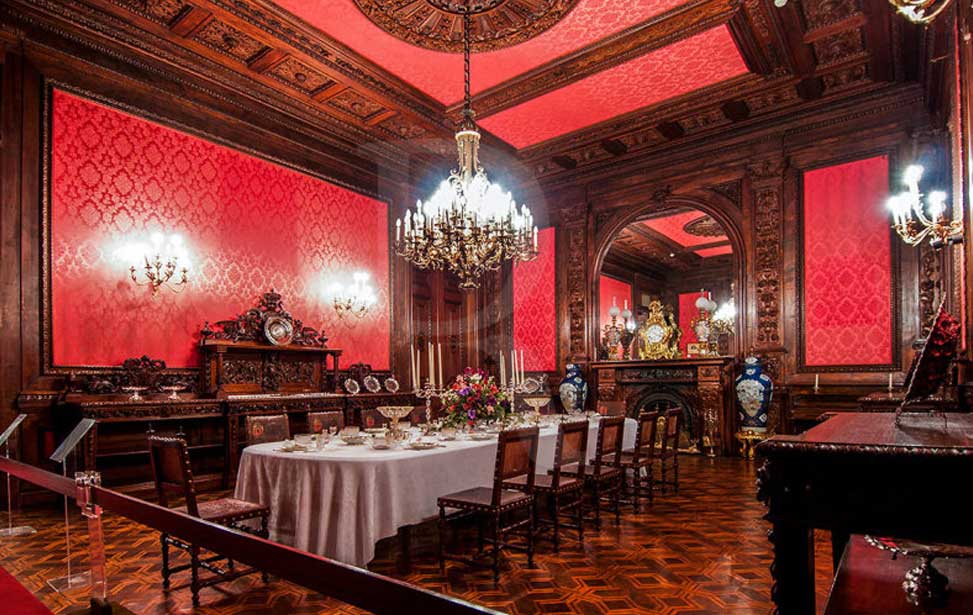
Dinning Room
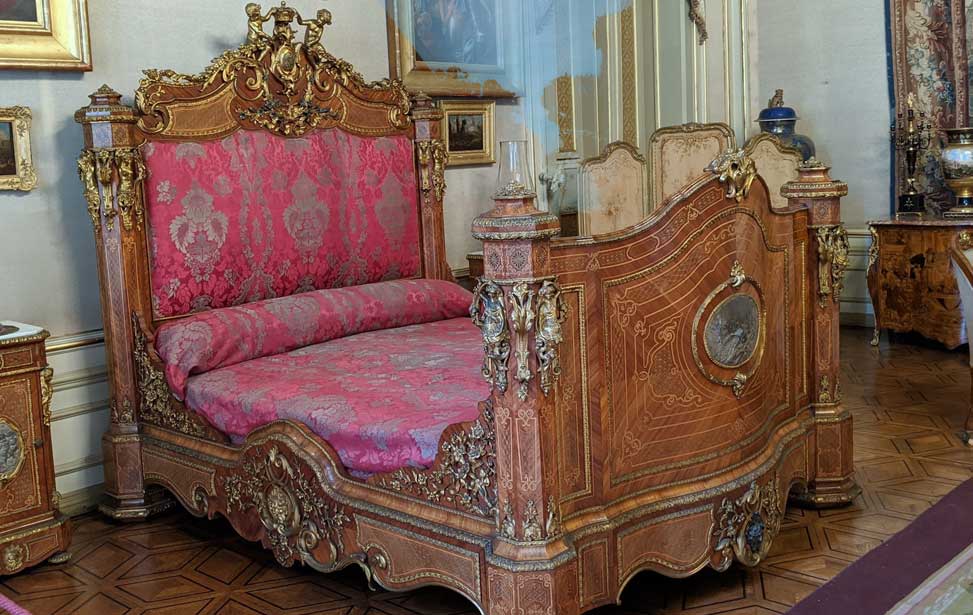
King's Room
STATE ROOMS
The State Rooms of the Palace were intended primarily for gala receptions. It houses the Diplomatic Corps Hall, the Throne Hall, King João VI Hall, the Grand Dining Hall, amongst other official reception rooms. The Painting Studio, the Study and the King’s Bedroom set up in 1888, the last year of King Luís’ life on medical advice, are of a private nature.King's Bedroom
On the advice of his doctor, Luís I moved his bed chambers to the main floor in the last year of his life. He occupied those rooms that had accommodated the Princes Carlos and Afonso during their childhood and adolescence. The King's chambers has several partitions leading to the antechamber, bathroom, office, bedroom and closet.
Queen's Portrait Room
Pride of place on the main wall is a portrait of Maria Pia, at 33, dressed for a formal occasion in blue and white, the colours of the Portuguese monarchy, by Carolus Duran. The seating in the room is of particular historical importance. It was used onboard the Príncipe Real, the ship which took João VI and his retinue to Brazil, after the invasion of Napoleonic forces.
In this former ballroom and feature a mural commemorating the King's return from exile in Brazil.
Throne Room
For almost two centuries, this was the Nation’s room to receive the highest representatives. At the arrival of the monarch, musicians would play Hino da Carta, the national anthem at the time. The musicians’ gallery, which is in this room, was taken away during the reign of King Luís and set in the João VI room. The room occupies most of the south wing of the building.
Banquet Room
The impressive Banquet room is still used today for state official dinners of the Presidency of the Republic. Hanging from the richly painted frescoed ceiling is a wealth of crystal chandeliers. It was here that some of the most significant ceremonies of the 19th century took place. Such as the Acclamation of Miguel (1828) and the wedding of King Carlos (1886). The decoration included a profusion of plants and silver, that sparkled in the candlelight. The pieces of gold and silver date from the 17th to the 19th century. They were produced in the best national and European workshops, together with 18th-century Chinese porcelain services, lining the sideboards, clearly display the artistic wealth of the tableware used by the Portuguese Royal Household.
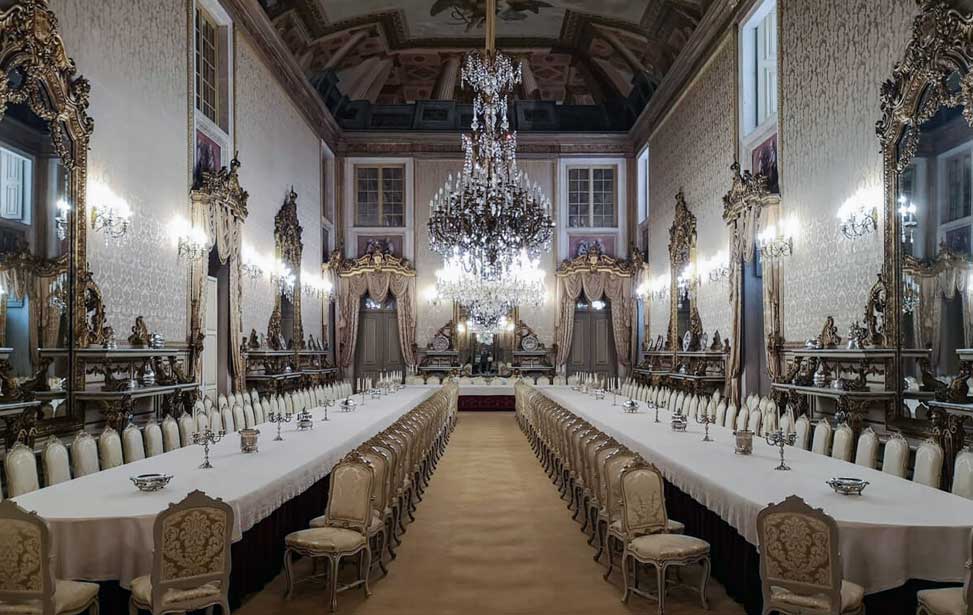
Bonquet Room
Adult: €5.00, Consessionary: €2.50, Child 0-12: FREE, ![]() Lisbon Card FREE
Lisbon Card FREE
GETTING TO THE AJUDA NATIONAL PALACE
| Tram #18E Timetable | |
| 727, 729 & 732 |
Largo da Ajuda 1349-021, Portugal.
38° 42' 27.5"N | 09° 11' 50.9"W | +351 213 637 095
geral@pnajuda.dgpc.pt | Website


 Lisbon Card Discounts
Lisbon Card Discounts








